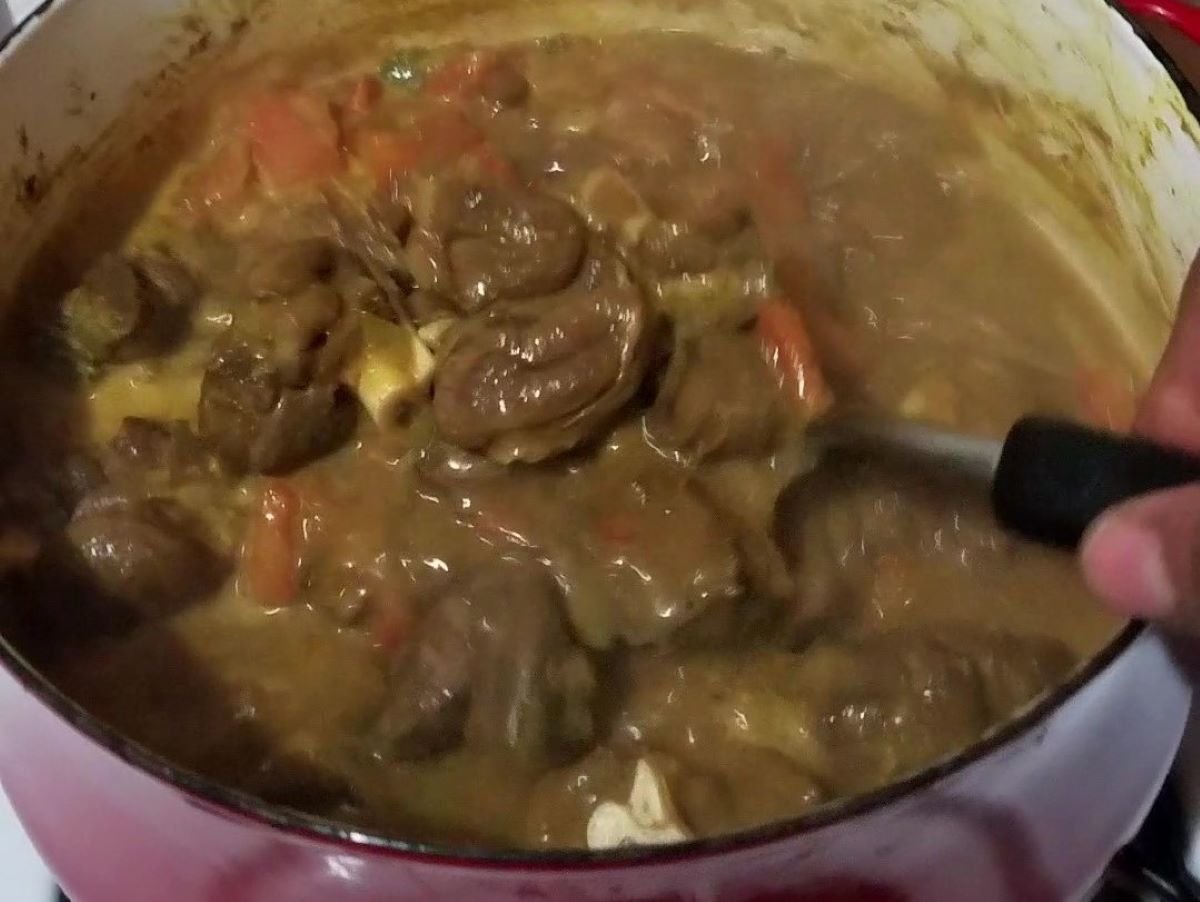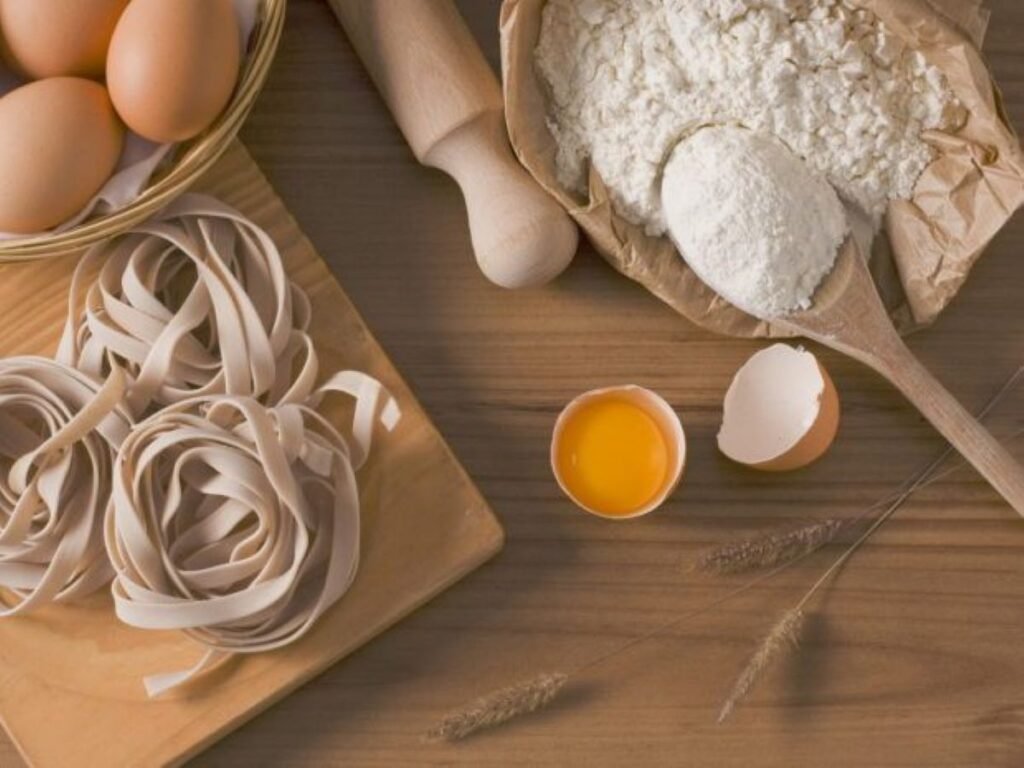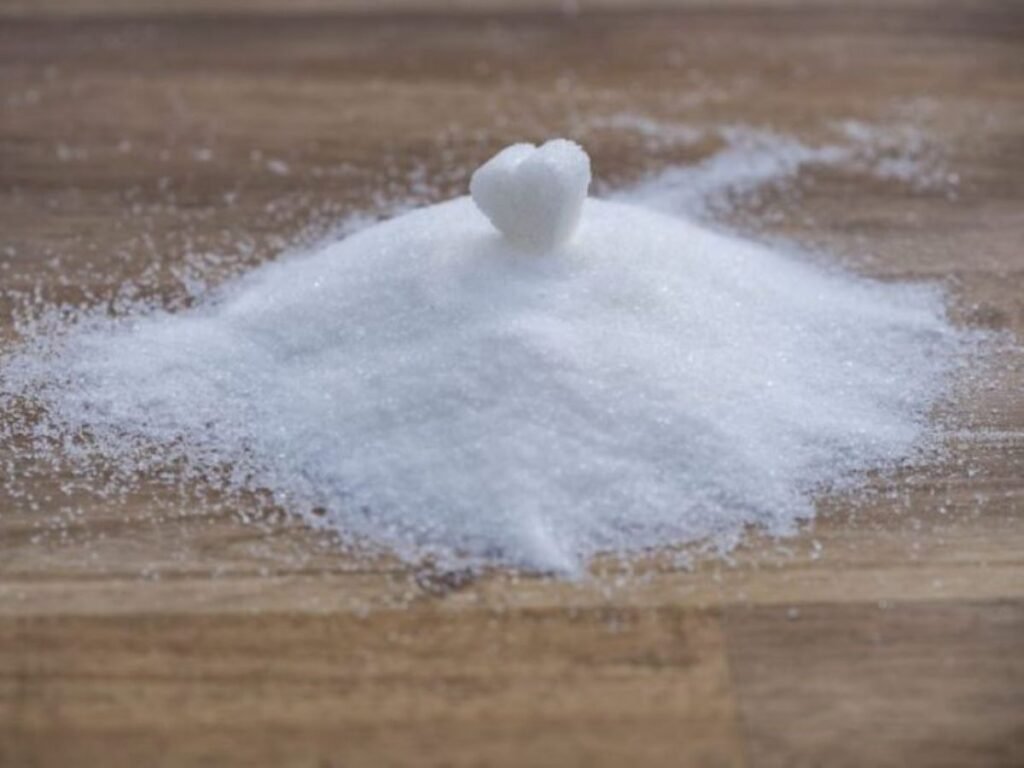This post may contain affiliate links. Please read my disclaimer for more information.
If you’ve ever had the pleasure of tasting authentic Caribbean cuisine, you know that Curry Goat or Lamb is a true standout dish. Rich, flavorful, and full of spice, it’s the kind of meal that can transport you straight to the islands with just one bite. This dish, whether made with tender goat meat or boneless lamb stew, is a celebration of bold flavors and aromatic spices, all cooked to perfection in a thick, savory curry sauce.
A Taste of the Caribbean
Curry Goat or Lamb is a beloved staple in Caribbean households, particularly in Trinidad, Guyana, and Jamaica, where curry dishes have become part of the cultural fabric. The use of curry powder in Caribbean cooking reflects the islands’ diverse culinary influences, including the Indian and African communities that brought their food traditions to the region. Today, this dish is enjoyed across the islands, with each cook adding their own twist to make it unique.
What makes Curry Goat or Lamb so irresistible is the balance of heat, spice, and rich, slow-cooked meat. Whether you prefer goat or lamb, this dish offers a depth of flavor that’s sure to satisfy any craving for something hearty and aromatic.
Goat vs. Lamb: Which to Choose?
Both goat and lamb are excellent choices for this dish, but each brings its own unique flavor profile.
- Goat: Known for its lean and slightly gamey flavor, goat is a common choice in traditional Caribbean curry. It’s lower in fat compared to lamb and becomes incredibly tender when slow-cooked. The gamey flavor of goat pairs beautifully with the bold, spicy notes of the curry, making it a perfect choice for this dish if you’re after authenticity.
- Lamb: Lamb, on the other hand, is a bit fattier and has a rich, distinct flavor that works equally well in curry. The natural fat in lamb helps to create a slightly richer and creamier sauce, especially if you choose to add coconut milk for extra creaminess.
Both meats are delicious, so it really comes down to personal preference. Goat is a bit more traditional, but lamb is an excellent substitute if you can’t find goat meat or if you prefer a slightly milder, fattier option.
The Power of Caribbean Spices
At the heart of this dish is the curry powder, a blend of spices that infuses the meat with layers of flavor. While curry powders can vary depending on the brand or blend, Caribbean-style curry typically includes turmeric, cumin, coriander, and fenugreek, with a healthy dose of heat from peppers like scotch bonnet or habanero.
The addition of grated garlic, scallions, onion, and thyme further enhances the flavor profile, creating a fragrant base that perfumes the entire dish as it simmers. Allspice is another essential component, adding a warm, slightly sweet note that rounds out the savory spices.
For those who like a little extra creaminess, the addition of coconut milk is optional but highly recommended. It balances the heat of the curry while adding a subtle silkiness that makes the sauce extra luxurious.
Heat Things Up with Scotch Bonnet or Habanero Peppers
One of the defining characteristics of Caribbean cuisine is its bold use of peppers, and scotch bonnet or habanero peppers are the go-to choice for adding heat to this dish. Both peppers are known for their intense heat, but they also bring a fruity, almost sweet flavor that complements the spices perfectly.
If you’re heat-sensitive, you can tone down the spice by using just a small piece of the pepper or removing the seeds and membrane before adding it to the dish. Conversely, if you love a spicy kick, feel free to add the whole pepper (with seeds) to get the full fiery effect.
How to Serve Curry Goat or Lamb
Once your curry has simmered and the meat is tender, it’s time to think about how to serve it. In the Caribbean, this dish is traditionally served with white rice or rice and peas, which helps to soak up all the delicious curry sauce. The fluffy rice, often cooked with coconut milk and kidney beans, complements the bold flavors of the curry, creating a well-rounded, satisfying meal.
You can also serve curry goat or lamb with roti (a type of flatbread) or boiled dumplings, both of which are perfect for mopping up the curry sauce. These starchy sides help balance the richness of the curry while adding texture and flavor to the dish.
For a lighter option, consider pairing the curry with a simple side of steamed vegetables or a fresh green salad.
The Importance of Time
Like many slow-cooked dishes, the key to a great Curry Goat or Lamb is time. Both goat and lamb benefit from slow cooking, which allows the meat to become tender and the flavors to meld together beautifully. Rushing the process will result in tough meat and a less-developed sauce, so give yourself plenty of time to let everything simmer.
How to Make Curry Goat or Lamb Your Own
While the core recipe remains the same, there are plenty of ways to make this dish your own. Here are a few ideas:
- Add Tomatoes: Some versions of curry goat or lamb include chopped tomatoes, which add a bit of acidity and sweetness to the dish. This can help balance the richness of the curry, particularly if you’re using lamb.
- Try Different Spices: Feel free to experiment with different spices to customize the flavor of your curry. Some people like to add ginger for an extra kick.
- Coconut Milk or Not?: As mentioned earlier, adding coconut milk is optional. If you prefer a lighter curry, skip it. If you want something a little creamier and richer, definitely add it in!
- Adjust the Heat: If you’re making this dish for a crowd, you might want to tone down the heat by using less scotch bonnet or habanero pepper. Conversely, if you love spice, don’t hold back—this dish is meant to be bold and flavorful!
A Dish with Depth
There’s something truly special about a well-made curry, and Curry Goat or Lamb is one of those dishes that brings comfort and satisfaction to the table. With its deep, complex flavors and tender, slow-cooked meat, it’s the kind of meal that makes you appreciate the beauty of Caribbean cooking.
Whether you’re looking to explore new flavors or simply want a hearty, flavorful dish to enjoy with family and friends, this Caribbean classic is always a hit. With just a few ingredients and a bit of patience, you can create a curry that’s bursting with spice, richness, and warmth—a true taste of the islands.
Curry Goat/Lamb
Ingredients
- 2 pounds goat meat or boneless lamb stew meat
- 1/4 cup olive oil
- 1/2 cup coconut milk optional
- 2 stalks scallion
- 1 yellow onion small to medium-sized
- 1 scotch bonnet or habanero pepper small
- 1 lime
- 3 tomatoes optional
- 3 garlic cloves
- 3 Tablespoons curry powder
- 1 1/2 Tablespoons salt
- 1/2 teaspoon each black pepper allspice & dried thyme (mix 1/2 tsp of each)
- 1/2 cup water enough to cover meat
Instructions
- Mix salt, pepper, curry powder, allspice, and thyme together in a small bowl and set aside.
- Slice scallions, dice the onion, grate the garlic cloves, seed, and dice the scotch bonnet/habanero pepper. Set aside.
- Wash goat meat in a bowl of water and pat dry with paper towels. Next, cut lime and squeeze juice over the meat. Mix the juice into the meat with your hands.
- Sprinkle the dry spices on the meat followed by the diced scallions, onion, garlic, and scotch bonnet pepper. Mix the seasonings well into the goat meat. Let marinate for at least 3 hours. Overnight is best.
- Heat oil to a deep pot over medium-high heat. Using thongs, carefully pick out the goat meat from the fresh herb seasonings and add to the heated oil (preserve the seasonings for the next step).
- Brown meat for 3 minutes. While meat is browning, dice the tomatoes and measure out the coconut milk if using.
- After 3 minutes, add diced tomatoes and preserved seasonings to the pot and stir thoroughly. Let cook for an additional 3 minutes.
- Add coconut milk if using and stir into the meat. If needed, add enough water to make sure that the goat meat is covered by the flavored broth.
- Turn down the heat on the stove to low and cover the pot with the lid slightly ajar. Simmer for 2-3 hours, stirring occasionally, until the meat is soft and tender.
- Serve over freshly steamed white rice or with roti or naan. Enjoy!






